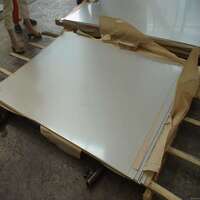1. What Does ‘Metal Clad’ Actually Mean?
At its core, the metal clad meaning refers to any material or structure that’s covered or layered with metal for protection, aesthetics, or performance. The term ‘clad metals’ describes composite materials where two or more metals are bonded together—like aluminum clad steel or stainless clad aluminum—to combine desirable properties such as corrosion resistance, strength, and cost-efficiency. Whether you’re talking about a metal clad house, a metal clad electrical wire, or even a boiler plate steel component, the concept remains the same: metal on the outside for enhanced function or form.

2. Metal Clad in Architecture: Walls, Roofs, and Facades
One of the most visible uses of metal clad today is in modern architecture. Designers love metal clad walls and metal clad roofs for their sleek look, durability, and low maintenance. Popular choices include corrugated steel facade panels, vertical standing seam metal siding, and colorbond standing seam systems. A standout trend? The corten steel facade—known for its rustic, weathered appearance that develops naturally over time. Corten steel siding cost can be higher upfront, but its longevity often justifies the investment.
- Zinc metal siding and zinc clad roof options offer elegant, self-healing surfaces that age gracefully.
- Copper siding brings timeless warmth and patina, while aluminum clad sheet systems provide lightweight versatility.
- PAC CLAD standing seam roof systems, including PAC CLAD coping and column covers, are widely used in commercial metal clad buildings for their clean lines and weather-tight performance.
3. Popular Metal Clad Building Materials

From sheds to skyscrapers, metal clad building components come in many forms. Exterior corrugated metal siding remains a favorite for barns and modern homes alike. For those seeking industrial charm, a steel clad house with corten siding or a zinc clad dormer adds bold character. Aluminum tread plate and diamond plate steel sheets are common for functional accents like stair treads or base plates. And don’t overlook metal weatherboard—a contemporary twist on traditional cladding that mimics wood but lasts decades longer.
4. Understanding Clad Metals in Industrial Applications
Beyond architecture, clad metal meaning extends into heavy industry and manufacturing. Clad steel—such as aluminum clad stainless steel or titanium clad plates—is engineered for extreme environments like chemical processing or marine settings. Alloy clad materials, including 2024 T3 clad or 7075 T6 clad aluminum, are vital in aerospace for their strength-to-weight ratios. Even boiler plate steel and thick steel plate variants may feature cladding for added corrosion resistance.

- Stainless steel plate grades like 316L or 904L are often used as base layers in clad composites.
- Electroplating techniques (e.g., chromium electroplating or electroless nickel) enhance surface properties without full cladding.
- Products like chrome carbide overlay plates or Inconel weld overlays serve high-wear applications in mining and power generation.
5. Electrical and Insulation Uses of Metal Clad
Not all metal clad is structural. Metal clad electrical wire—also called MC cable—is armored with an outer metal sheath for fire resistance and mechanical protection, commonly used in commercial buildings (yes, even in Pennsylvania!). Similarly, aluminum clad pipe insulation protects HVAC and plumbing systems from temperature loss and physical damage. These applications rely on the protective qualities of metal without needing it as a primary load-bearing element.
6. Common Metal Plates and Sheets in Cladding Systems
When sourcing materials, terms like mild steel plate, 1/8 inch steel plate, or 3/16 metal plate frequently appear. Aluminum checker plate (or chequer plate) is popular for non-slip surfaces, while stainless steel diamond plate offers both grip and corrosion resistance. Specialty items like brass plates for engraving or bronze plate price-per-kg quotes cater to niche markets. For DIYers and contractors alike, searching ‘steel plate near me’ or ‘aluminum sheet for sale’ often leads to local suppliers stocking clad-compatible materials.
7. Cost, Maintenance, and Installation Considerations
While metal clad siding and facades boast long lifespans, initial costs vary widely. Corten siding cost depends on thickness and finish, while zinc and copper command premium prices. However, systems like PAC CLAD HWP (High Wall Panel) or colorbond standing seam offer mid-range alternatives with excellent ROI. Installation typically requires trained professionals—especially for standing seam facade or vertical standing seam metal siding—but results in minimal upkeep for decades.
8. Sustainability and Innovation in Metal Cladding
Modern metal clad solutions are increasingly eco-friendly. Many systems use recycled content, and metals like aluminum and steel are fully recyclable at end-of-life. Innovations include perforated plate designs for natural ventilation, and alloy sheet 3mm composites that reduce weight without sacrificing strength. As green building standards rise, expect more demand for zinc nickel alloy claddings and Inconel 625 overlay technologies.
9. Choosing the Right Metal Clad Type for Your Project
Ask yourself: Is this for looks, protection, or both? A metal clad shed might only need basic corrugated steel, while a downtown office could benefit from a stainless steel facade or copper-clad accents. For electrical safety, stick with certified metal clad wire. And if you’re bonding dissimilar metals—like stainless clad aluminum—ensure compatibility to avoid galvanic corrosion.
10. Final Thoughts
Whether you’re designing a steel clad building, upgrading your home with metal clad siding, or specifying clad steel for industrial use, understanding the breadth of ‘metal clad’ applications empowers smarter decisions. From corten steel plate to aluminum clad steel wire, the versatility of clad metals continues to shape how we build, protect, and beautify our world—one metal layer at a time.
Our Website founded on October 17, 2012, is a high-tech enterprise committed to the research and development, production, processing, sales and technical services of ceramic relative materials such as 10. Our products includes but not limited to Boron Carbide Ceramic Products, Boron Nitride Ceramic Products, Silicon Carbide Ceramic Products, Silicon Nitride Ceramic Products, Zirconium Dioxide Ceramic Products, etc. If you are interested, please feel free to contact us.
